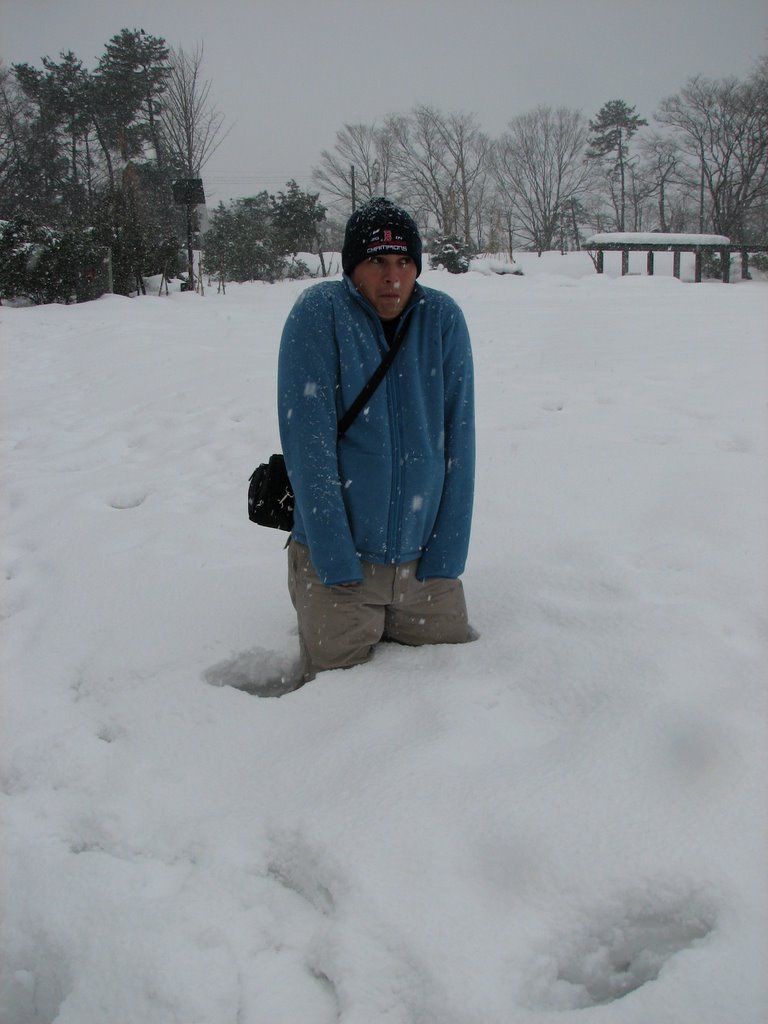This is where I was when I heard about the job vacancy for the Public Involvement Coordinator:

I love Japan, but I'm loving the weather in Saipan a whole lot more.
Hi, I'm Angelo Villagomez and I am the new Public Involvement Coordinator working with the Marianas Resource Conservation and Development Council. Depending on who you ask, I am either a Chamorro born American or an American educated Chamorro. Both are true. Take your pick.
My Mom is an American and my Dad is a Chamorro from Saipan. Although I was born on Guam and spent the first few years of my life in Saipan, my parents divorced while I was very young, so I grew up in Massachusetts, well, until we moved to London in 1991, and then again, until we moved to Florida in 1992.
Because of my school schedule, I was only able to visit Saipan during the summers, but it was during those summers spent tromping around Saipan with my Dad that I first gained an appreciation for the outdoors and for environmental protections. My father gave me simple lessons, like don't take a coconut crab if it is carrying eggs, but they were the building blocks for what eventually became my environmental ethic.
Unfortunately, the last time I spent a summer in Saipan was in 1995. While in college, I always had either a summer job (I worked at Walt Disney World for seven years) or took summer classes, so I haven't managed to make it back until recently.
As for my education, I received my Bachelor of Science in Biology from the University of Richmond in 2000 and my Artis Baccalaureate in Environmental Studies from Rollins College in 2004. At Rollins College I was the 2004 Environmental Studies Student of the Year.
An internship my last year at Rollins College lead to my first job in the environmental field. I was a Team Leader with the
League of Conservation Voter's Environmental Victory Project. We went door to door to raise awareness of the environmental voting records of both presidential candidates in the hopes that swing voters could be persuaded to vote for the candidate with the better record. We knocked on 284,383 doors and made 110,459 voter contacts in Orange, Seminole, Osceola, and Lake Counties in Florida.
I've always wanted to live in Japan, so after the election I started working on a plan to move there with my girlfriend to teach English. Things were pretty quiet immediately after the election, so while I waited to find out if I got a job there I worked at
Roy's Restaurant in Orlando (by the way, there is Roy's in Guam. I can't wait to go there!)
A few months after the election I was contacted by the Florida State Manager of LCV and was offered a job as LCV Campaign Coordinator for Florida. I told her that I was moving to Japan at the end of the year, but that I would love to work for LCV in the mean time.
We spent most of 2005 working on grassroots efforts to educate the public on water quality and offshore drilling issues and lobbying lawmakers to vote pro-environment. We also worked closely with several other local progressive (and even a few conservative!) groups to collect signatures for three separate Florida Constitutional Amendment initiatives. LCV headed up a Central Florida Steering Committee whose members, in addition to swapping barbs about each other's political affiliations, managed all of the volunteer petition gathering activities for the Central Florida region.
Then in late November I moved to Japan.
A month later, a notice from the Marianas RC&D asking for proposals for a public involvement coordinator came across my desk. I knew it was too good of an opportunity to pass up. So much for teaching English, ne?
I submitted a proposal and the rest, as they say, is history.
Now I get to spend the next year or so protecting this:

 On Wednesday I inspected part of the Lau Lau watershed with Jeremy Shaw from DEQ and Luis Sablan and Tim Lang from CRM. This morning I went for a beach dive in Lau Lau Bay.
On Wednesday I inspected part of the Lau Lau watershed with Jeremy Shaw from DEQ and Luis Sablan and Tim Lang from CRM. This morning I went for a beach dive in Lau Lau Bay.








